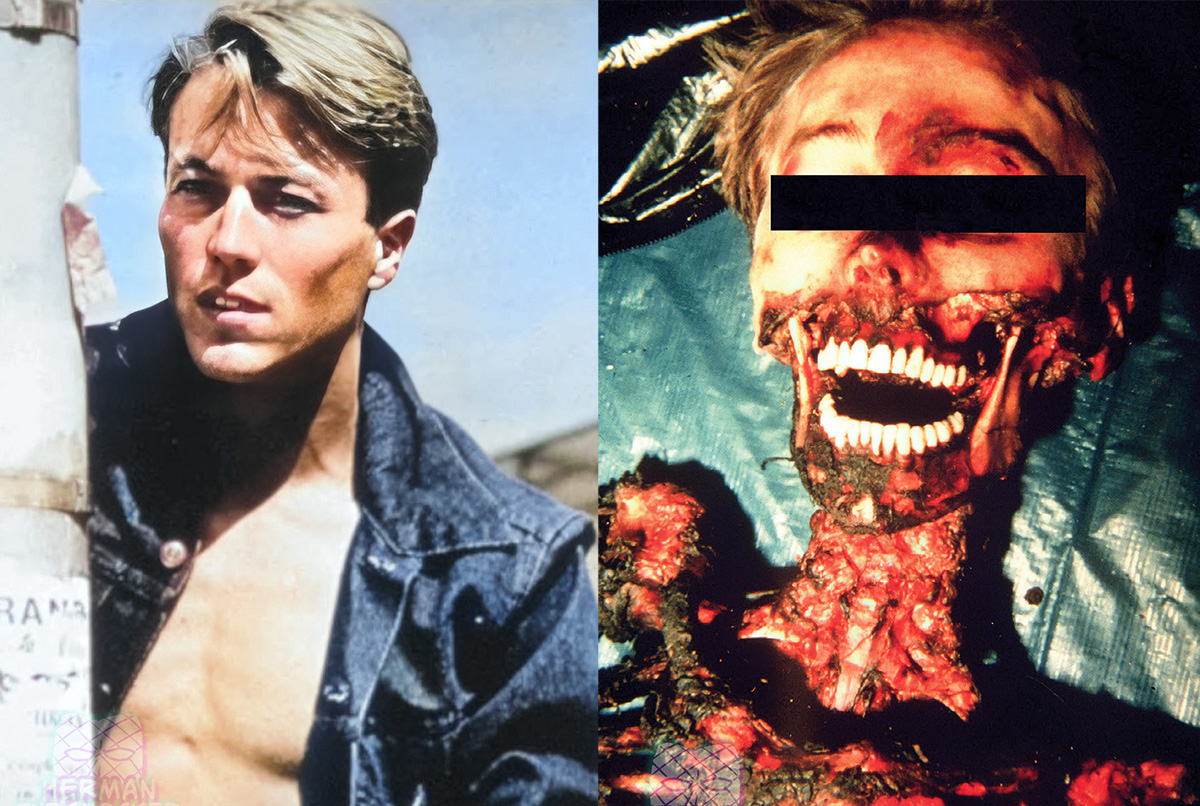Rockland County, NY, US. In March 1985 some young boys found a charred and mutilated corpse in a smokehouse on the Rockland County property of a family named LeGeros. The victim – wearing a black leather hood used in sadomasochistic rituals – turned out to be Eigil Dag Vesti, a handsome young fashion student from Norway who had been missing from his downtown Manhattan haunts for several weeks. It soon developed that Vesti had been murdered in a bizarre sadomasochistic scenario created by 57th Street art dealer Andrew Crispo and his assistant, Bernard LeGeros, a son of the couple who owned the estate. LeGeros confessed that he had fired the gun that killed Vesti, but said that he had done so at Mr. Crispo’s behest.
A leather mask was partially covering the victims face, and through the winter months there had been substancial animal scavenging on the corpse. An identification was possible through dental reccords and also visually on the preserved part of the head. This case became known as the Death Mask Murder case.
Vesti was apparently a willing victim who got more than he bargained for. Meeting Crispo at a bar, Vesti went home with him, where he was savaged in the way he seemed to crave. But then, flying high on cocaine, Crispo began to talk of killing him, according toLeGeros’s testimony. The two, taking along a rifle, drove Vesti up to the Rockland County home of LeGeros’s family, and after some more wild action, according to LeGeros, Crispo gave the order to shoot. And LeGeros obeyed. “He snapped,” Crispo later said.
Crispo was not charged in the case. Apart from LeGeros’s testimony there was no corroborating evidence, so Crispo went scot-free. Subpoenaed for LeGeros’s trial, he took the 5th and 14th Amendments, which protected him from being forced to testify against himself. However, soon afterward, he was sentenced to seven years in prison for income tax evasion – he owed almost $4 million on income of $10 million – a sentence later reduced to five years, of which he served three.
Soon after his release from prison in 1989, a massive explosion leveled Crispo’s cherished house in Southampton, where he had hung some of his most prized works of art. (Before his imprisonment, sales of part of his collection at Sotheby’s and Christie’s netted Mr. Crispo and his creditors nearly $20 million.) But in 1991 a jury awarded him $8.6 million from the Long Island Lighting Company – which admitted that an accident in the form of a gas leak under the house had been the cause.
In 2019 Bernard LeGeros was paroled after serving 3 decades behind bars for the crime.
Latest posts

















